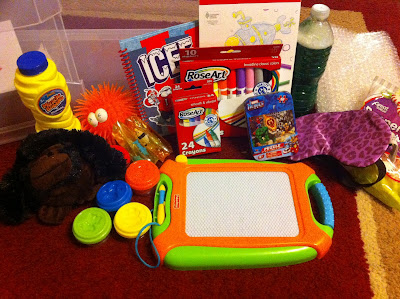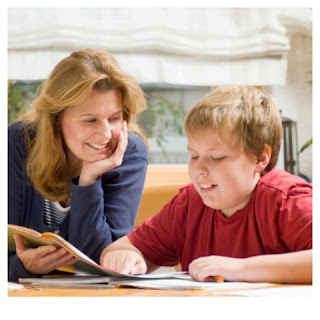What You Can do about Sibling Conflict
It didn’t take long for my child to notice the other kids at the park had a
brother or sister to play with and realize that he was alone.
I would catch myself thinking about how much
better it would be if he had a sibling to be his buddy.
Yet, I know firsthand that siblings tend to
have a love-hate relationship.
They
might play well one minute, and then be at each other’s throat the next.
As a parent, I want my children to love each
other and get along.
Not only does that
make a more peaceful home, it helps them to build positive relationships with
each other and others.
Unfortunately, there is no instruction manual given to you when you leave
the hospital after you have your first born. And there will be no manual
created by the time you have your second, third, forth, or even tenth.
There can be no miracle book or set of
instructions because each child is so incredibly unique, how could anyone try
to tell a parent that they should each be parented the same. But, these
wonderful differences in our children mean arguing, competition, bickering,
confusion, and often frustration.
Here are seven tips that can help you enjoy the individuality of each child,
while cultivating positive sibling relationships.
1)
Remember that life’s not fair. This is the famous “F” word in my life. It has a major tendency to get under my
skin. How many times have you heard,
"why does he get to stay up late and I have to go to bed?" Or,
"why does he get the bigger piece of pizza?" I could go on and on.
Kids are natural born score keepers and struggle with the concept of fairness.
However, what is equal and right, is not always the same as fair. Remember that each child is unique and needs
unique parenting. Use these times of argued fairness to explain how you embrace
the individuality of each child and how you work to meet each of their needs. A simple tip for food sharing; have one child
cut the pieces and the other one distribute them. This makes them work hard to keep it even and
they work together.
2)
Make sure each child has their own individual
space. This will vary depending on the
child, again part of that uniqueness.
Some children need to feel like they have control over a lot of space,
like an entire bedroom, while others are ok with having a special chair or
corner. Whatever your children need,
listen to them, and try to accommodate.
This space gives them a place to go to when things get to be too much,
or when they want alone time.
3)
Give each child one-on-one time. I know this is something that is said about
almost everything, “if you only spent more time with them, then they wouldn’t
__(fill in the blank)__.” Well,
truthfully, it works for resolving sibling conflicts. Think about how many of the sibling arguments
or fights are from a child wanting your attention. If we give them the attention on the
forefront, this can prevent the need for them to act out to receive our
attention. I know life is hectic and
schedules are busy, especially with multiple children, but 15-30 minutes for
each child during the week or every other week can be doable. And it can be cheap. Maybe take a walk, paint fingernails, play a
card game, cook dinner together, or even do chores together. As long as it is special “mom and joey time,”
and that child gets your attention, it can be fulfilling for them.
4)
Take out any competition. This sets up a rivalry between the children
and puts a thorn in the relationship.
Rather than having them compete against each other, give them a mutual
goal to try and achieve together. For
example, don’t see who can clean their room the best. Have them race the clock to see if they can
both work to get the rooms clean together before time runs out. The more achievements they have between them,
the stronger their relationship. Instead
of comparing who has the better grades, or who is the better athlete, allow
praise and excitement for each of their achievements.
5)
Set up coaching opportunities. By this I mean, give them things to teach
each other. Going back to each child
being an individual, there are going to be things that they naturally do
well. Have them teach the other one about
this. This will build one child’s
confidence, educate the other, and increase the communication abilities for
both of them. For example, an older
sibling could teach a younger one how to tie their shoes. A younger sibling could teach an older one a
song they learned.
6)
Help them work out their problems on their own. Be there to guide them and moderate when
needed, but let them choose who gets to watch what tv show and when, or what
they think would be fair for sharing the computer. And just think how much time you will save if
they can work things out without you.
7)
Sometimes all you have to do is listen. Kids need to feel heard, and they will do
some pretty crazy things to get our attention.
Try stating what you are hearing them tell you or show you. For example, “I hear you telling me that you
are very angry with your brother because he broke your toy.” Just being there for them to vent to or
express something to is sometimes all they need.
Some easy things to do over the holiday season to build on the sibling
relationship:
-
Have a sibling gift exchange. These could by handmade or store bought, but
the idea is that they had to think about what their sibling would like and
appreciate. This has them stop thinking
about themselves, and think about others.
-
Have “caught ya” jars or sticker charts for each child. Tell each child they can put marbles (or
whatever you choose) in a jar each time they catch one of their siblings doing
something good. Again, this will focus
on the positive choices and build those up.
Once any of the jars reach a set point, all the kids can have a sibling
outing or special treat. Remember to
keep out the competition, which is why you reward all the siblings when any of
the jars are full.
-
Have them set their own New Year’s Resolutions for
their sibling relationships.
-
Encourage a fun sibling tradition, like decorating
cookies, writing Santa letters, donating toys, or making presents for
grandparents.
Keep in mind that not all sibling conflict is bad.
The relationship that we have with our
siblings helps prepare us for the outside world.
We learn how to stand our ground, how to
compromise, how to share, and how to be a friend.


































